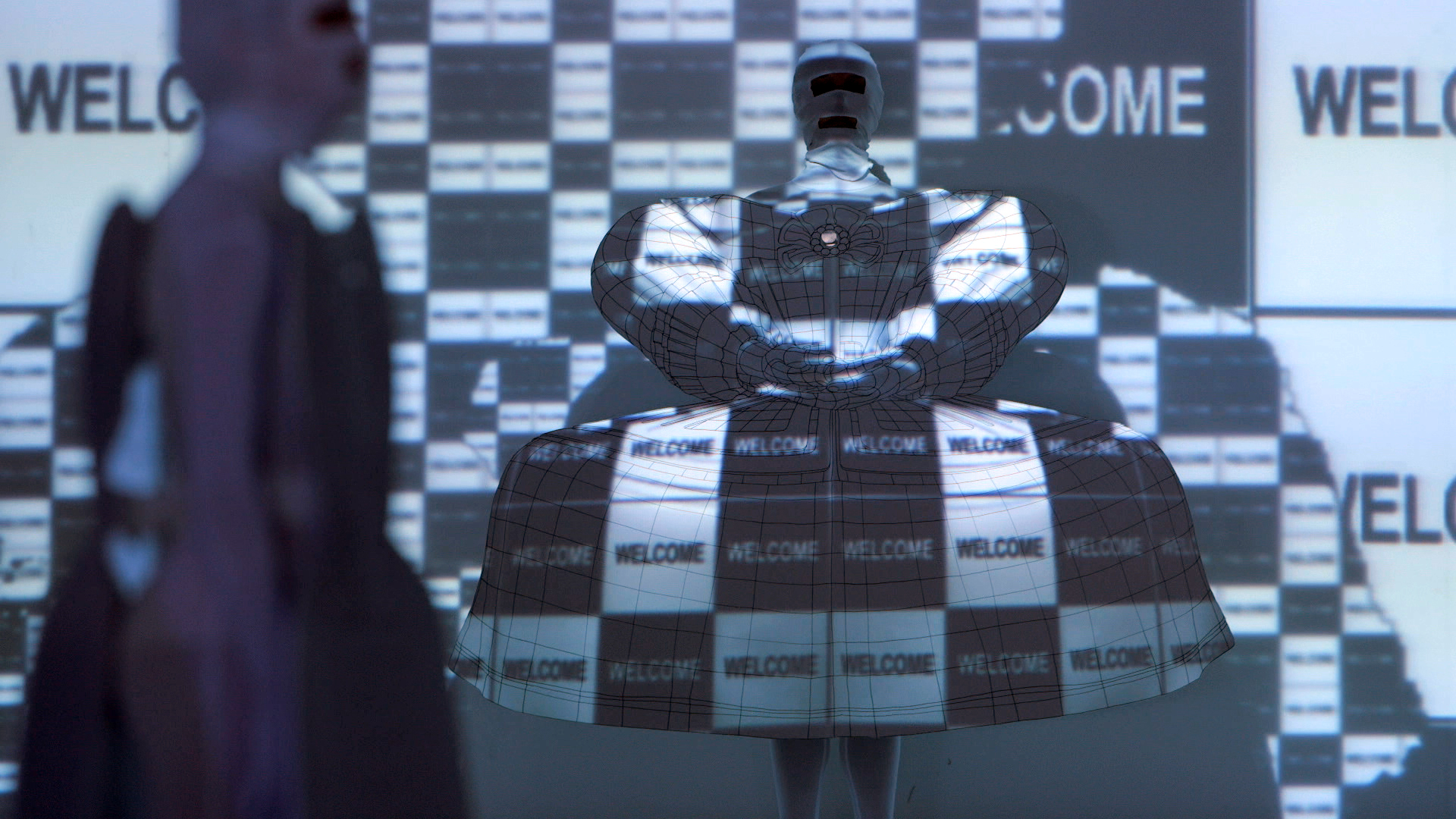

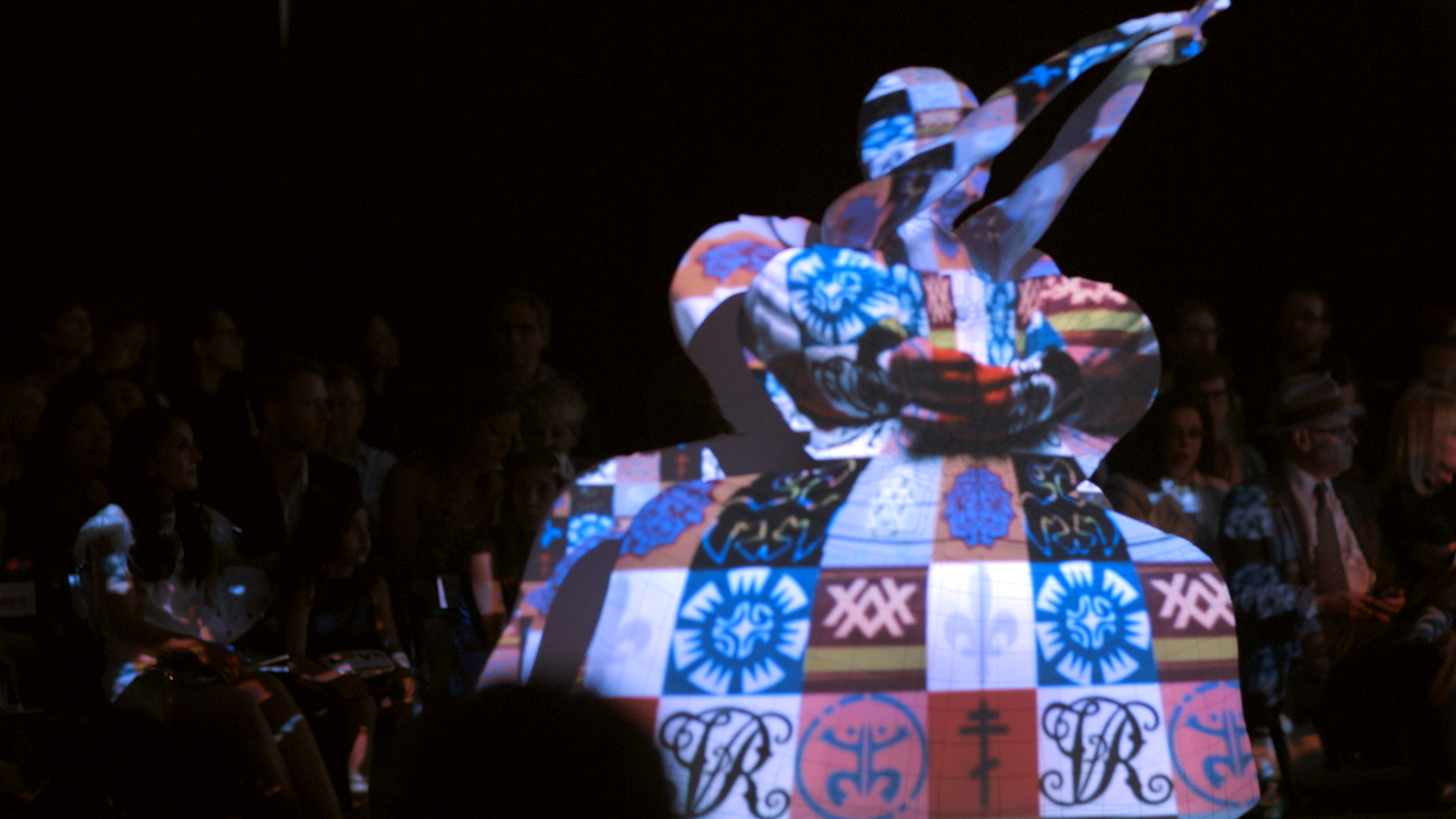
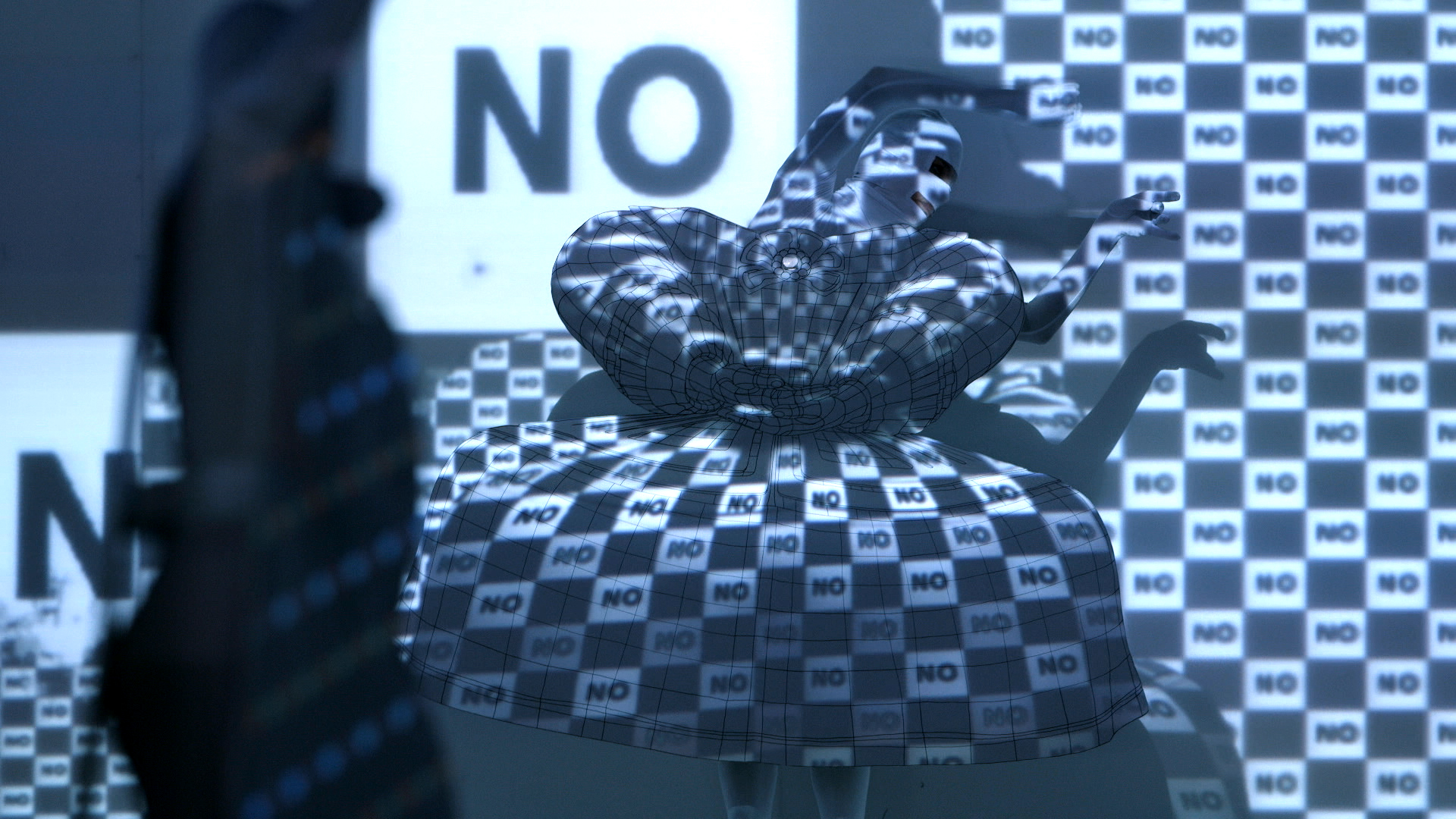
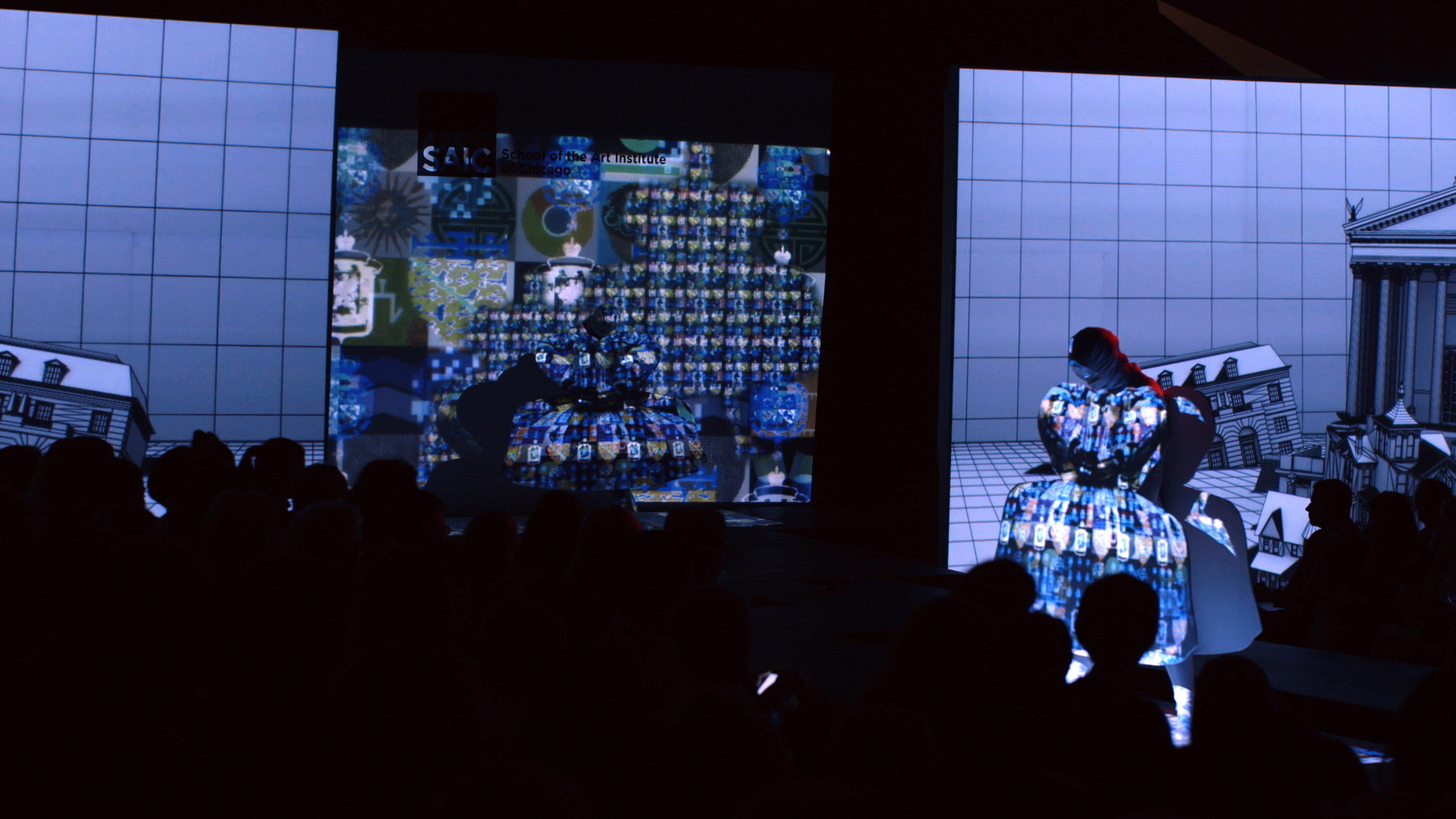
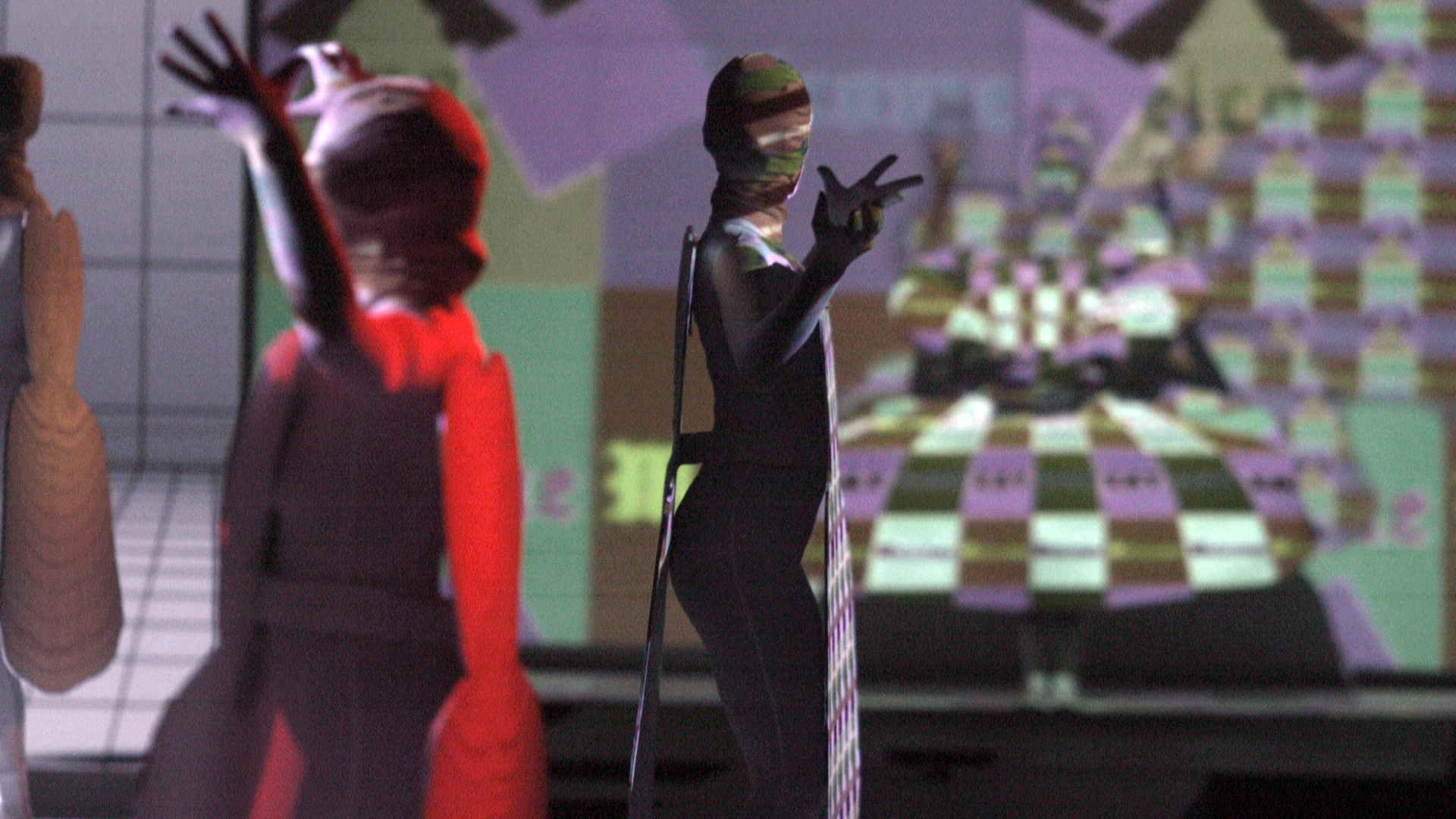



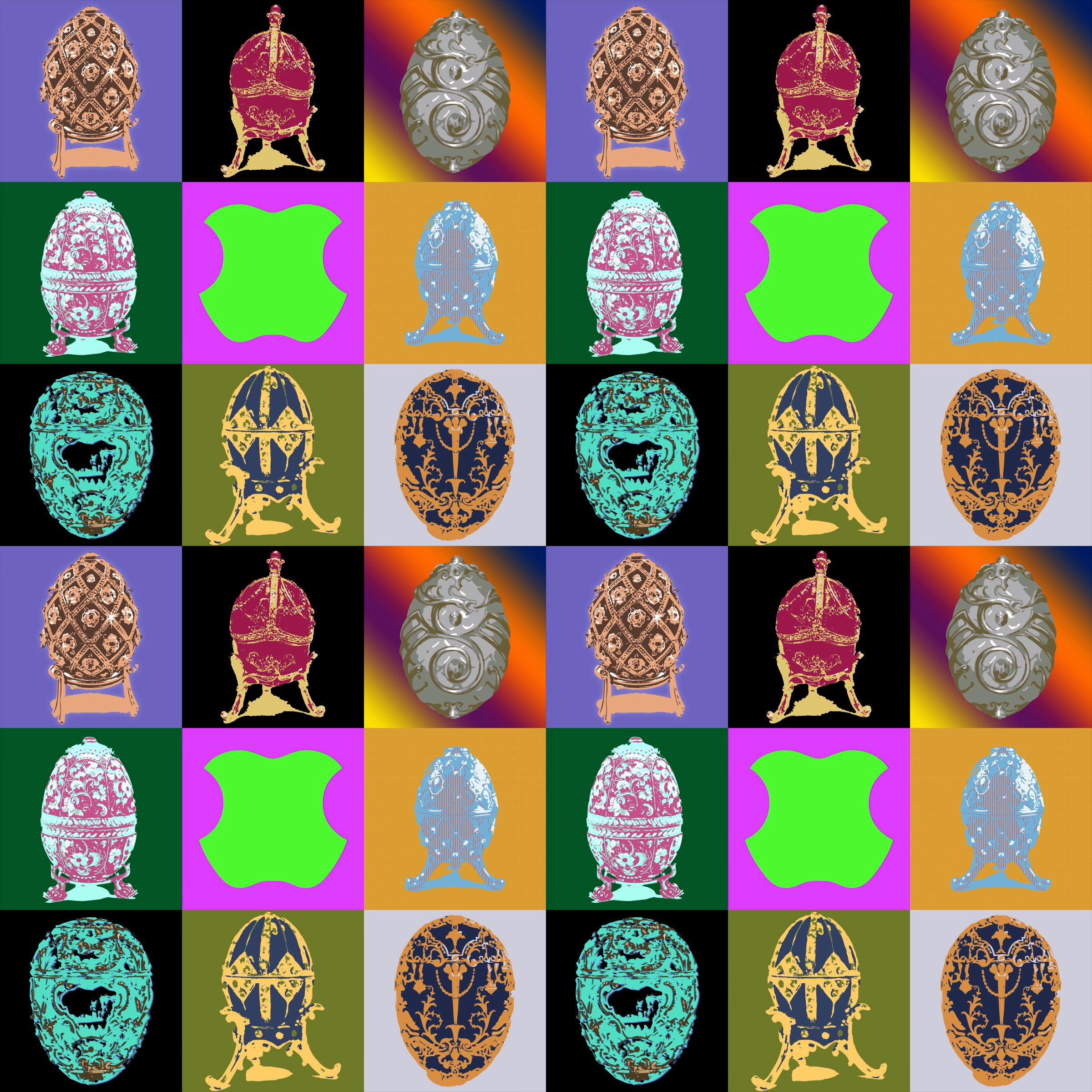



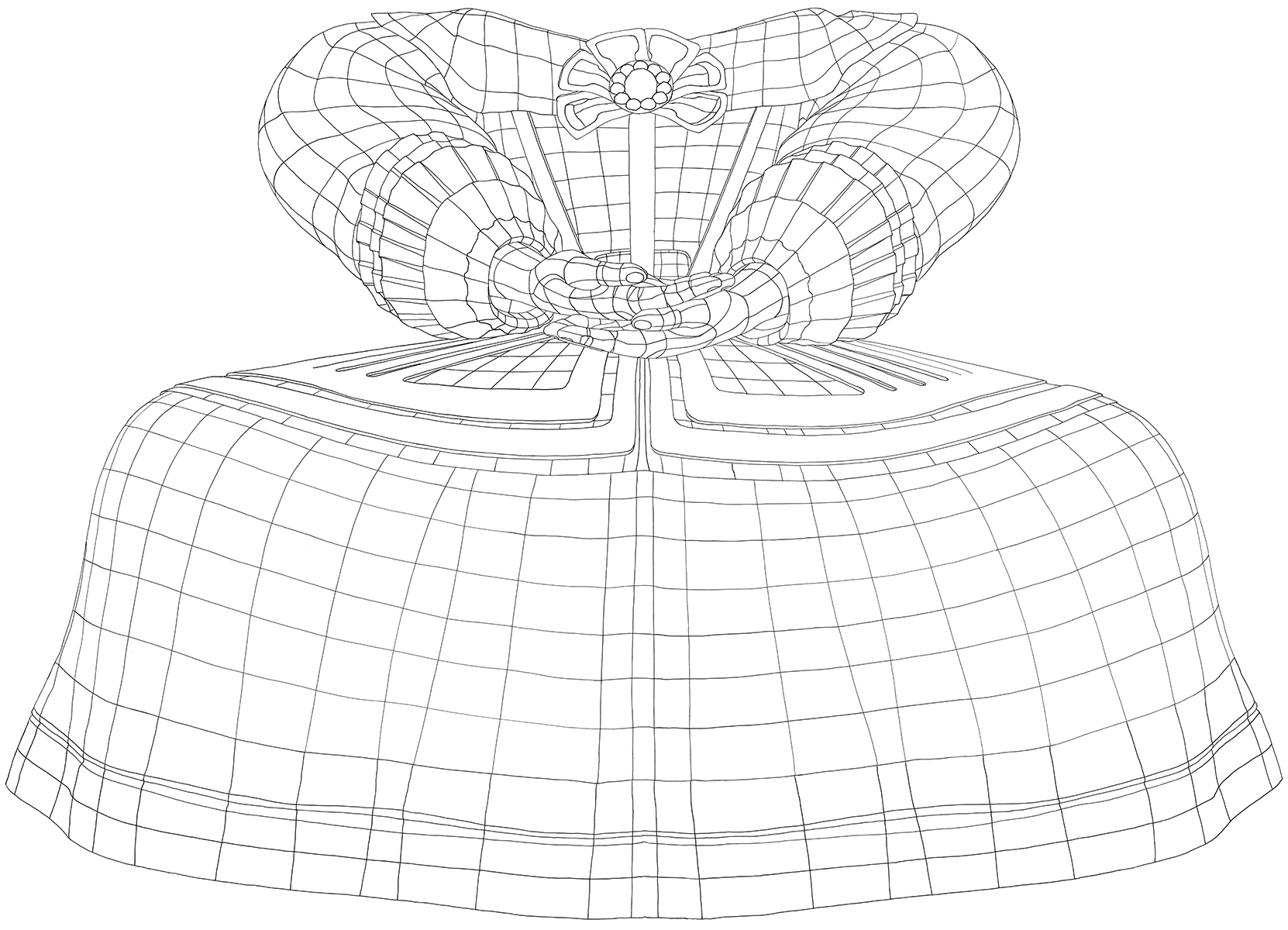
The Dolls, A Media Ballet for Fashion Runway
by Claudia Hart
May, 2015
The Walk at The School of the Art Institute, Millenium Park, Chicago
Choreography: Kristina Isabelle
Music composition: Kurt Hentschlager
Projection Design: Liviu Pasare
Performed by:
The Kristina Isabelle Dance Company
Sarah Gonsiorowski
Katie Graves
Kristina Isabelle
Angela Luem
April Torneby
The Dolls is a media ballet by Claudia Hart created specially for the runway of the Fashion Walk 2015. It is inspired by the philosophical idea of the “eternal return.” This is the notion that history endlessly renews itself through a process of decadence, decay and rebirth. To embody this, Hart has molded mathematical cycles into visual form, creating rhythmic, animated patterns that have been projected onto dancers wearing paper, hand-drawn tutus that function not only as wearable art but also as movie screens for her animations. Hart’s animations take the form of these pulsing patterns because they are physically mesmerizing and intentionally hypnotic as a result of their algorithmic qualities.
The music for The Dolls was also specially composed for The Dolls by the media artist and digital composer Kurt Hentschlaeger. To create the score, Hentschlaeger expanded on another piece initially commissioned by Hart in 2010 from Ella Joyce Buckley for Empire, her first mixed-reality performance work, drawing on many of the same themes. Choreography for The Dolls was also composed by another Chicago-based artist, Kristina Isabelle, and performed by the Kristina Isabelle Dance Company.
Channeling the 1999 sci-fi action film, The Matrix, Hart used the mathematical computer grid as the central symbol for our technological era. To further this, she also designed an architectural set that is also virtual, consisting of digital simulations of dollcs houses projected on monumental 25 foot screens. For her set, Hart imagined an abstract computer warehouse filled with old dollhouses culled from the junk heap of some future history. Hart selected her doll houses from the virtual models available as shareware for all users of Internet, populating Google Earth and stored in its repository - the Google 3D Warehouse. Hart scoured Google’s warehouse for architectural monuments from a decadent history, past empires from all over the world. These include The Arch of Labna (a Mesoamerican archaeological site and ceremonial center of the pre-Columbian Maya civilization), the Roman Forum-of-Ceasar, Marie-Antoinette’s Le Petit Trianon (the small chateau on the grounds of Louis XIV’s Versaille, where she dressed as a milkmaid with her ladies-in-waiting), a Queen Anne House from Victorian England; the Dragomir Mansion from Bucharest; and the Paulwall House - still standing in our own ruined Detroit.
Like her doll houses, Hart’s paper billboard tutus are also drawn from the scion of a fallen empire: the gowns of Margaret Theresa of Spain, among the last of the Spanish Habsburgs. This child princess was also the central figure in the famous painting Las Meninas, a canonical masterpiece by the great 17th-century court painter, Diego Velázquez, and the subject of many of his paintings. The Velázquez princess dresses were modeled by computer and repainted by hand on watercolor paper. Hart then designed animated patterns that pulse to Hentschlaeger’s atmospheric rhythms and then further computer-mapped them back onto Kristina Isabelle’s dancers, all of whom have been strapped into cardboard projection-screen Princess dresses. The resulting experience is strange and also hallucinatory, transforming each dancer into a surrealistic, mechanical paper-doll.
The algorithmic flickering patterns used in The Dolls were made from specially designed graphics based on the symbols of further collapsed empires - from the Faberge eggs of The House of Romanov to the banners and heraldry of Gengis Kahn and the Mongol Empire. Distributed among these are also the current logos and graphical icons of our own multinationals corporations. The end result of all of these flickering signs is in some ways like a stroll through Times Square or a glitzy night in Vegas. But it is also paradoxically and strangely quite trance inducing and meditative. This is because The Dolls is truly heartfelt. The work is intended by its author to induce contemplation on the passage of time and the death of kings, and meant to be a vehicle for some kind of enlightenment.